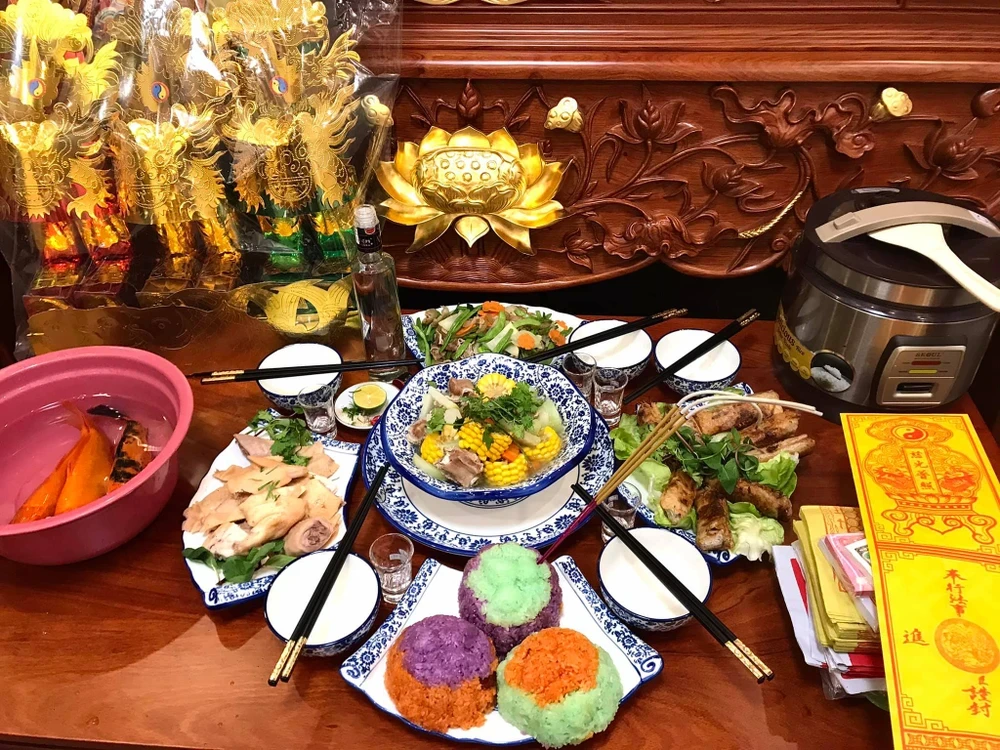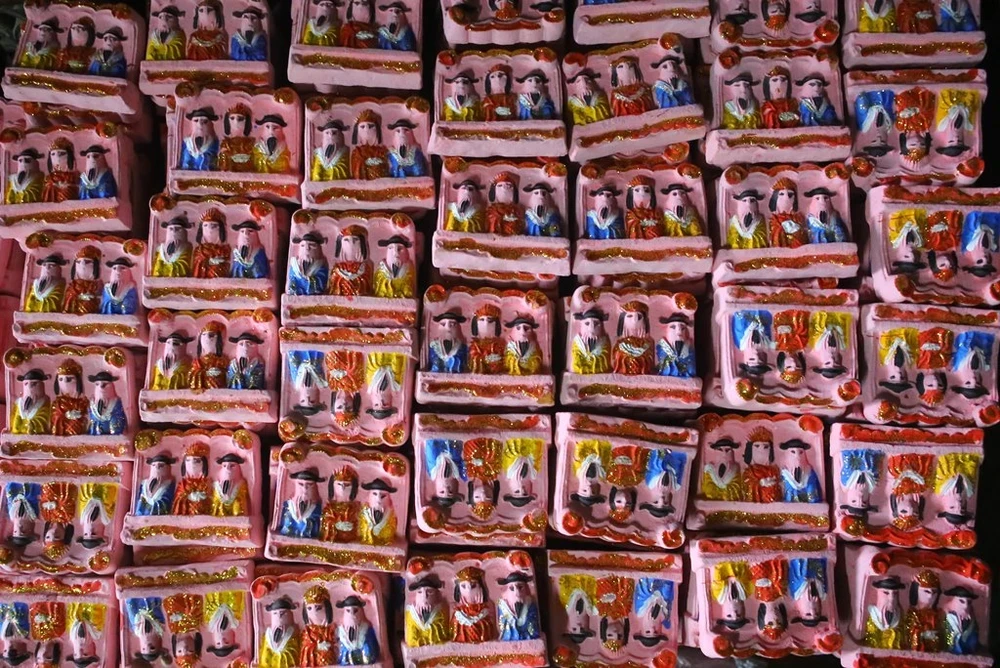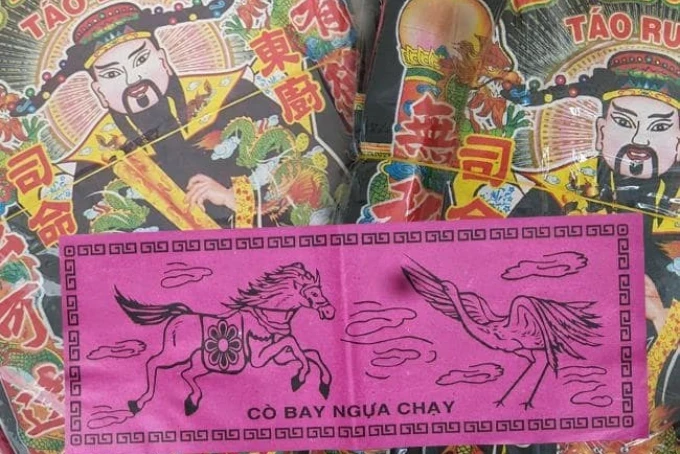Although both have the same meaning of sending Mr. Cong and Mr. Tao off to the Jade Emperor to report on the homeowner's situation during the year, the time of worship and offerings in different regions have interesting differences.

The ceremony to worship the Kitchen Gods on the 23rd of December is considered an important ceremony that opens the Lunar New Year for Vietnamese people.
According to legend, on this day, the Kitchen Gods will ride a carp to heaven to report to the Jade Emperor about the events that happened to the homeowner during the past year to determine rewards and punishments.
Therefore, in the Vietnamese concept, the three Kitchen Gods (or Kitchen Gods) will determine the good and bad fortunes and blessings for the family. Of course, this blessing comes from the moral actions of the homeowner and the people in the house.
With the hope that the Kitchen God will "bless" their family with good luck, families often clean their house and kitchen thoroughly and prepare a solemn meal to send the Kitchen Gods off to heaven.
Depending on regional customs, the rituals of worshiping Ong Cong and Ong Tao in the three regions of North, Central and South have certain differences, but they all have similarities in expressing the homeowner's respect for the god who governs the family's fortune.
Northerners often worship Ong Cong and Ong Tao quite early. Most families prepare offerings for the ceremony around December 20th and at the latest by noon on December 23rd.
The reason why not many places hold ceremonies after this time is because folklore believes that after 12 noon on the 23rd, the Kitchen Gods go to heaven and are no longer on earth to receive offerings.
The offerings to the Kitchen Gods of the North include three sets of paper, two for the male Kitchen Gods and one for the female Kitchen Gods. The male Kitchen Gods' hats have two dragonfly wings, while the female Kitchen Gods' hats do not. In addition, there are other types of paper money along with incense, flowers, cakes, fruits, areca nuts, and betel. The paper money will be burned after the ceremony.
The offerings to the Kitchen Gods include traditional Northern dishes such as sticky rice, chicken, ham, sausage, bamboo shoot soup, spring rolls, etc. In many localities in the North, there are also offerings of sticky rice and sweet soup, usually sweet soup made from glutinous rice, broken sticky rice, brown sugar, and ginger.
A distinct cultural feature of the North compared to the Central and Southern regions is that most families often use carp as offerings to the Kitchen Gods.
Families can offer live carp or paper carp in different quantities. Live carp are placed next to the offering tray, after the ceremony is finished, they are released into ponds, lakes, rivers and streams near the house with the meaning of carp turning into dragons, serving as a means to bring the Kitchen Gods back to heaven.
Besides, releasing carp on this day also shows the kindness and virtue of the homeowner.
The custom of worshiping Ong Cong and Ong Tao in the Central region is considered the most elaborate of the three regions.
The ceremony to send the Kitchen Gods to heaven is usually held on the 23rd of December. Before that, the homeowner will change the sand in the incense bowl and clean the Kitchen Gods' altar.
Instead of offering carp like in the North, people in the Central region often offer a paper horse with a full set of saddle and bridle.
In addition, the offering tray must also have mackerel or tuna, fresh flowers, fruit and especially the old and new Tao Quan statues placed next to each other.

Some regions such as Hue and Hoi An have the custom of erecting a pole in front of the house or in the communal house yard on the morning of December 23 to ward off evil spirits when the Kitchen Gods are “away” and hold a pole lowering ceremony on January 7.
After the worship, the homeowner will take down the old terracotta statues of the three Kitchen Gods on the kitchen altar and bring the new statues of the three Kitchen Gods to the altar to start the next working year. The statues of the old Kitchen Gods will be placed next to the shrines at the beginning of the village or under the roots of ancient trees at the intersection.
According to the ancient Southern customs, there are many differences compared to the way of worshiping today. Families often worship Tao Quan at night, between 8pm and 11pm on the 23rd of December.
Southerners believe that the ceremony to worship the Kitchen Gods should only be performed at the end of the day, when the whole family has finished dinner, and at this time there is no need to use the kitchen to cook, and no need to bother the Kitchen Gods, then it is time to perform the ceremony to send the Kitchen Gods to heaven.
However, due to cultural exchange, the time and offerings for the Kitchen Gods in the South have changed somewhat. Many families hold the ceremony to see off the Kitchen Gods early in the morning of December 23rd at the kitchen stove area.
In addition to the main savory dishes such as spring rolls, pork rolls, banh chung, pickled onions, boiled chicken... the offering tray also has bowls of sweet rice balls and candy made from black sesame and peanuts.

Offerings include incense, candles, and three small bowls of water. In particular, there must be a set of "flying storks and running horses" to be burned after the ceremony is over.
The "flying stork, running horse" set is a set of votive papers printed with the image of a galloping horse and a stork with outstretched wings, without a bamboo frame and consisting of two different parts, one part used in the farewell ceremony and one part used in the ceremony to welcome the Kitchen God back to the homeowner on the 30th of Tet.
According to the book "Special study on the belief in worshipping the family spirit," Southern people use the "stork flying horse running" paper set to symbolize the horse carrying the Kitchen God on the road and then the stork carrying the Kitchen God back to Heaven.
The custom of using horses and storks as mounts in the South originated from the "sacrificing horses and cranes" ritual according to Taoist and Buddhist rituals. This is the last ritual performed in the worship ceremonies. People gather all the petitions and stuff them into paper horses and paper cranes prepared in the worship ceremony and burn them with the meaning of asking the horses and cranes to carry the petitions to places of worship in the Three Realms.
TB (according to Vietnam+)